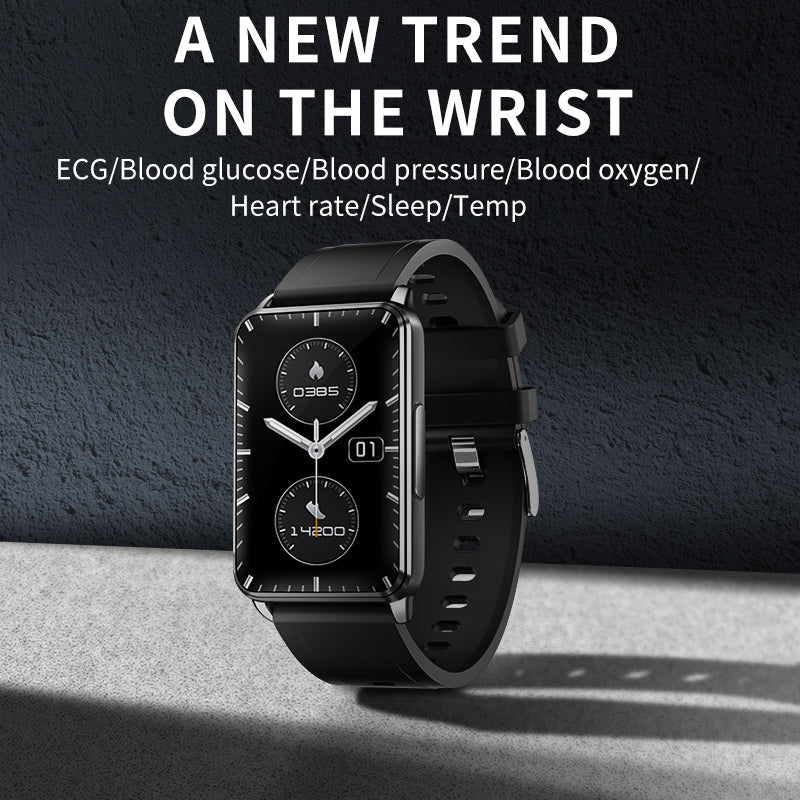Devons-nous vraiment nous tenir droit ?
Depuis notre enfance, le conseil de « se tenir droit » est ancré dans nos esprits comme un principe fondamental pour une bonne posture. Mais devons-nous vraiment maintenir une position droite en permanence ? Est-ce vraiment essentiel pour notre santé et notre bien-être ? Examinons de plus près le concept de se tenir droit et explorons les vérités et les mythes qui entourent cette notion largement acceptée.
Comprendre la posture :
La posture fait référence à la position dans laquelle vous maintenez votre corps lorsque vous êtes assis, debout ou couché. Une bonne posture est souvent associée à un alignement du corps de manière à exercer le moins de pression possible sur les muscles et les ligaments de soutien pendant les mouvements ou les activités de port de poids.
Les mythes :
Mythe 1 : Il est nécessaire de toujours se tenir debout.
En réalité, même si une bonne posture est essentielle, cela ne signifie pas pour autant qu'il faut rester toujours droit. La clé est de maintenir une colonne vertébrale neutre, qui permet la courbure naturelle de la colonne vertébrale tout en évitant de trop s'affaisser ou de se pencher.
Mythe 2 : Une posture parfaite élimine tous les maux et toutes les douleurs.
Bien qu’une bonne posture puisse réduire le risque de tensions et de douleurs musculaires, elle ne permet pas d’éliminer complètement l’inconfort. D’autres facteurs tels que l’ergonomie, la condition physique et les différences corporelles individuelles contribuent également au bien-être général.
Les vérités :
1. Avantages d’une bonne posture :
-
Contrainte réduite : Maintenir une bonne posture peut soulager le stress sur les muscles et les ligaments, réduisant ainsi le risque de problèmes musculo-squelettiques.
-
Amélioration de la respiration et de la digestion : Une bonne posture permet une expansion pulmonaire optimale et facilite une meilleure digestion en évitant la compression des organes internes.
-
Confiance et humeur améliorées : Des études suggèrent qu’une bonne posture peut avoir un impact positif sur l’humeur, l’estime de soi et la confiance.
2. L’importance de la posture dynamique :
Les positions statiques pendant des périodes prolongées peuvent être tout aussi nocives qu'une mauvaise posture. Il est essentiel de bouger et de changer de position régulièrement pour éviter les raideurs et la fatigue musculaire. La posture dynamique consiste à changer de position et à être attentif à l'alignement du corps pendant le mouvement.
Obtenir une bonne posture :
-
Ergonomie: Évaluez et ajustez les espaces et environnements de travail pour favoriser une bonne posture. Utilisez des chaises avec un soutien lombaire approprié et ajustez les écrans d'ordinateur au niveau des yeux.
-
Exercice et renforcement : Une activité physique régulière et des exercices qui renforcent les muscles du tronc, comme le yoga ou le Pilates, peuvent favoriser une bonne posture.
-
Pleine conscience : Soyez attentif à votre posture tout au long de la journée, que vous soyez assis, debout ou en train de marcher. Faites des pauses, étirez-vous et ajustez fréquemment vos positions.
L'idée de se tenir droit ne consiste pas à maintenir une position précise de manière rigide à tout moment. Il s'agit plutôt de comprendre les principes d'une bonne posture, permettant au corps de s'aligner naturellement tout en évitant de s'affaisser ou de se fatiguer. La posture est dynamique et il est essentiel de trouver un équilibre entre différentes positions pour favoriser la santé et le bien-être général.
Bien qu'une bonne posture joue un rôle essentiel dans notre santé physique et notre comportement, il est tout aussi crucial de comprendre qu'il s'agit d'un spectre et non d'une règle rigide. L'objectif est de maintenir un alignement corporel qui réduit la tension, favorise le confort et soutient la santé globale.En cultivant une conscience du positionnement de notre corps et en effectuant des ajustements conscients, nous pouvons améliorer considérablement notre posture et, par la suite, notre qualité de vie globale.
Poursuivant le débat sur le maintien d'une bonne santé et d'un bon bien-être, les avancées technologiques ont considérablement modifié la manière dont nous surveillons et suivons notre condition physique et nos paramètres de santé. Présentation du BP Doctor BPS2, un appareil portable intelligent et polyvalent conçu pour permettre aux individus de surveiller de manière exhaustive leur santé.
Doté d'une multitude de fonctionnalités, le BP Doctor BPS2 est un compagnon de santé efficace. Il intègre de manière transparente diverses fonctionnalités pour offrir aux utilisateurs une vue globale de leur bien-être. De l'électrocardiogramme ECG et de la mesure précise de la température corporelle à la mesure indépendante et précise de l'oxygène dans le sang, cet appareil portable assure un suivi précis de la santé.
Le BP Doctor BPS2 se distingue par sa capacité à surveiller en temps réel les paramètres de santé vitaux, tels que la fréquence cardiaque et la fréquence respiratoire. De plus, l'appareil est doté d'une mesure automatique photoélectrique de la pression artérielle, garantissant une surveillance pratique et fiable pour les utilisateurs à tout moment.
Au-delà des simples mesures de santé physique, cet appareil met également l'accent sur l'importance de la surveillance du sommeil, permettant aux utilisateurs d'obtenir des informations sur leurs habitudes et leur qualité de sommeil. De plus, l'inclusion d'une alarme de fréquence cardiaque et de rappels de sédentarité favorise un mode de vie plus sain et plus actif.
L'une des caractéristiques distinctives du BP Doctor BPS2 est sa capacité à fournir des soins à distance aux proches. Cela permet aux utilisateurs de partager leurs données de santé, favorisant ainsi un sentiment de soutien et de bien-être entre leurs proches.
Doté d'un mode multisports et de mesures d'exercice complètes (y compris les pas, les calories et la distance), cet appareil portable s'adresse aux amateurs de fitness, encourageant un mode de vie actif. La fonction permettant de lever le poignet pour éclaircir l'écran offre un confort d'utilisation, tandis que le rappel anti-perte garantit que l'appareil reste facilement accessible.
De plus, le BP Doctor BPS2 intègre de multiples fonctionnalités pratiques telles que les rappels de messages et d'appels, le contrôle de la musique, la télécommande de la caméra et la mise à niveau OTA, améliorant ainsi son utilité en tant qu'appareil portable intelligent multifonctionnel.
Notamment, le BP Doctor BPS2 fait également allusion à une fonctionnalité révolutionnaire : la surveillance non invasive de la glycémie, qui, si elle se concrétise, pourrait révolutionner la surveillance de la santé en permettant un suivi pratique de la glycémie sans avoir recours à des procédures invasives.
En conclusion, le Médecin de la pression artérielle BPS2 se présente comme un compagnon de suivi de santé holistique, regroupant diverses fonctionnalités de surveillance de la santé dans un seul appareil convivial. Avec ses capacités avancées et la promesse d'une surveillance non invasive de la glycémie, il représente une avancée significative dans la capacité des individus à gérer et à surveiller leur santé de manière proactive.










